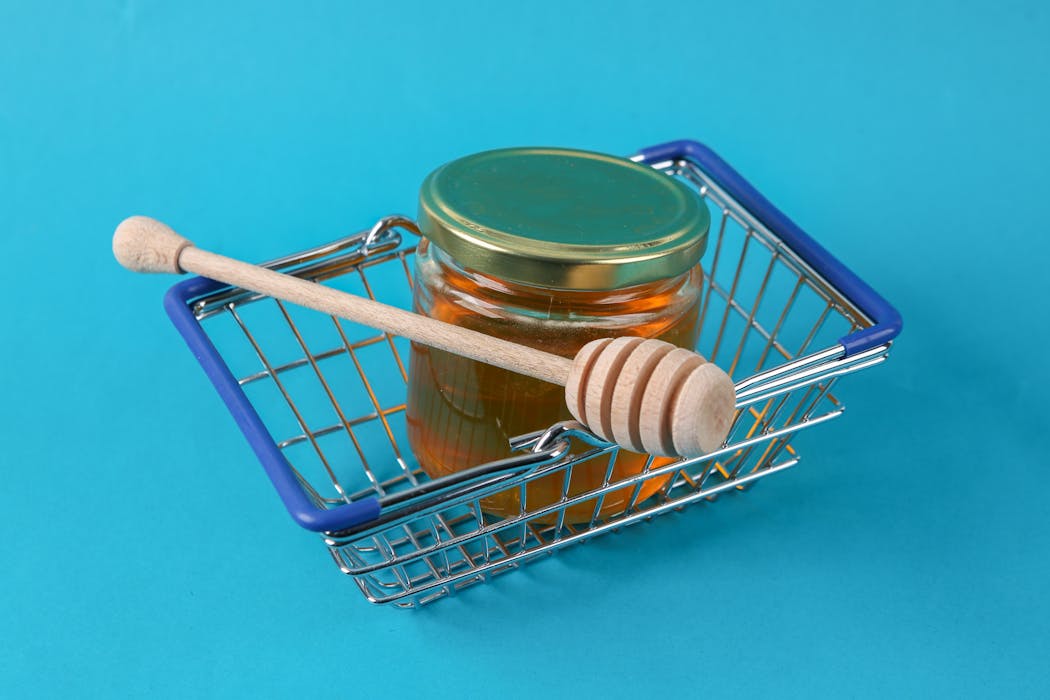why honey fraud is a health hazard
- Written by Matthew Pound, Associate Professor in Physical Geography, Northumbria University, Newcastle

Naturally sweet, but potentially hiding a criminal past? This is not the plot of a new crime drama. It is about the jar of honey in your kitchen.
Most honey[1] comes from managed colonies of honeybees[2]. Thousands of worker bees collect nectar[3] from flowers[4], bring it back to the hive and transform it into honey. But as global demand increases and specialist honeys command high prices, honey has become one of the most frequently adulterated foods[5] in the world.
Honey fraud[6] usually takes two forms. The first involves altering the honey itself[7]. Some producers dilute honey with cheaper sugar syrups. Others artificially ripen immature honey by dehydrating it or even feed sugar solutions directly to bees, creating a product that only resembles real honey.
A joint investigation[8] by the European Commission and the European Anti Fraud Office examined honey imported into the European Union between 2021 and 2022. It found that 46% of tested consignments showed signs they contained added sugar syrup. The motive is simple economics. Producing natural honey is costly and time consuming, while rice or corn syrups are much cheaper to make and sell.
The second type of fraud is more subtle. Labels claim a honey comes from a particular plant or place when in reality it has been blended from lower quality or imported sources. Mānuka honey[9] is a well known example. It sells for significantly more than regular supermarket honey, which makes it an attractive target for mislabelling.
Read more: Mānuka honey: who really owns the name and the knowledge[10]
Consumers often choose honey[11] because they believe it is natural or healthy. Research also shows[12] that many people are willing to pay more for honey that is local, pure and traceable. Yet most countries, including the United Kingdom, do not produce enough honey to satisfy domestic demand and rely heavily on imports. This creates opportunities for blending, relabelling and fraud before honey reaches shop shelves.
Honey fraud is not just about economic loss. It also raises concerns about consumer safety. When honey is altered for profit, health is rarely a priority. A European study[13] found that some imported honey contained traces of pesticides, heavy metals, veterinary medicines and polycyclic aromatic hydrocarbons[14]. These are substances that, in high amounts or through prolonged exposure, may be harmful. Some pesticides and heavy metals can affect the nervous system or organs. Veterinary drugs may cause allergic reactions or antibiotic resistance. Polycyclic aromatic hydrocarbons are chemicals formed during incomplete combustion and some are known carcinogens.
Although the health effects of these substances in honey are not fully understood, some research suggests[15] that adulterated honey containing additional sugar syrups can cause blood sugar levels to rise more sharply than natural honey, potentially increasing the risk of diabetes. Fraud also undermines public trust and makes it harder for honest beekeepers to compete.
There are already scientific tools designed to protect honey authenticity. Chemical tests can detect sugar syrups that should not be present in genuine honey. Another method, known as melissopalynology[16], involves examining pollen grains naturally found in honey to identify which plants and regions it came from. Each plant species produces distinct pollen that specialists can recognise under a microscope.
However, pollen analysis is labour intensive and requires trained experts. This is where artificial intelligence[17] is beginning to help. Machine learning models have been tested to identify pollen grains in honey and the early findings are promising. Many studies report accuracy rates above 90%.
The challenge is the complexity of pollen. Each pollen grain is a three dimensional structure that can appear in countless orientations, and every plant species produces pollen with unique features. For artificial intelligence to work at scale, it needs to be trained on extensive image databases of known pollen types. At present, such a database is incomplete.
Even so, combining machine learning with chemical analysis could change how honey is checked. Artificial intelligence could help automate pollen identification and match it with chemical data, allowing regulators and producers to test more samples, more quickly and more accurately. This would make it harder for fraudulent honey to slip through supply chains and into household cupboards. The technology is still developing, but the outlook is positive.
For now, the jar of honey on your breakfast table may still hold secrets. But as scientific methods progress and artificial intelligence becomes more sophisticated, we are moving closer to a future where honey can be trusted not only for its sweetness, but also for its integrity.
References
- ^ honey (theconversation.com)
- ^ honeybees (theconversation.com)
- ^ nectar (theconversation.com)
- ^ flowers (theconversation.com)
- ^ one of the most frequently adulterated foods (www.sciencedirect.com)
- ^ Honey fraud (theconversation.com)
- ^ altering the honey itself (pmc.ncbi.nlm.nih.gov)
- ^ A joint investigation (food.ec.europa.eu)
- ^ Mānuka honey (theconversation.com)
- ^ Mānuka honey: who really owns the name and the knowledge (theconversation.com)
- ^ Consumers often choose honey (onlinelibrary.wiley.com)
- ^ Research also shows (www.mdpi.com)
- ^ A European study (pubmed.ncbi.nlm.nih.gov)
- ^ polycyclic aromatic hydrocarbons (link.springer.com)
- ^ some research suggests (pmc.ncbi.nlm.nih.gov)
- ^ melissopalynology (pmc.ncbi.nlm.nih.gov)
- ^ artificial intelligence (www.emerald.com)
Read more https://theconversation.com/the-honey-trap-why-honey-fraud-is-a-health-hazard-268369







